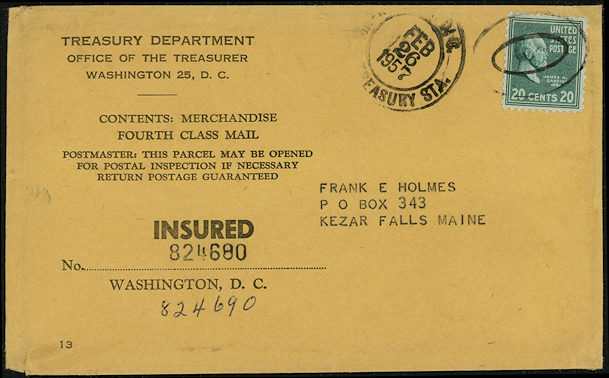
The Twenty-cent Prexie
Third and fourth class use
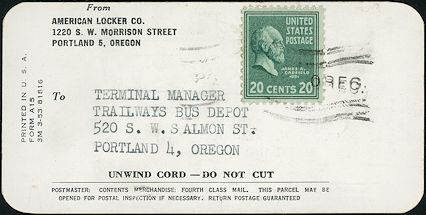
A package tag sent fourth class within Portland, Oregon, most probably in the middle 1950's. The local rate for one pound or less was eighteen cents from October 1, 1953 to February 15, 1960. Each additional pound was 1.45 cents, so two pounds would come to 19.45 cents, rounded to twenty.
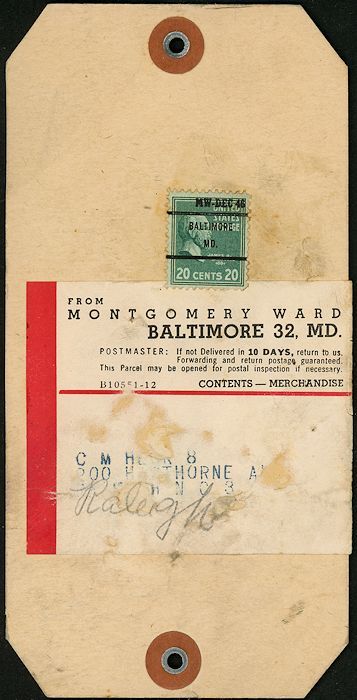
A fourth class package tag sent from Baltimore to Raleigh in December of 1946. The rate breaks down to Zone 3, first pound 9 cents, ten cents for five additional pounds at two cents per pound, plus the minimum surtax of one cent.
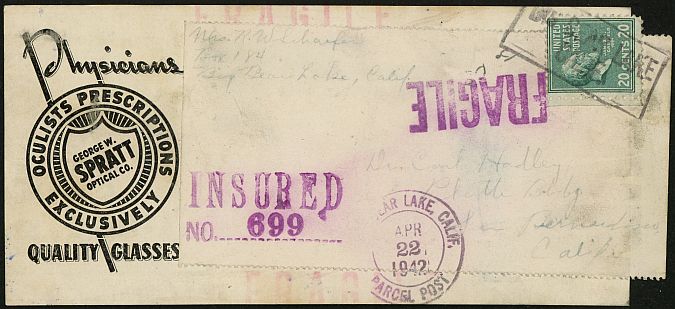
This is part of a package sent parcel post insured for twenty cents within zone 1 in April of 1942. If the franking does not represent a convenience overpayment, the package weighed between one and two pounds for 9.1 cents postage, and the insurance charge was ten cents for indemnity of $5.01 to $25.
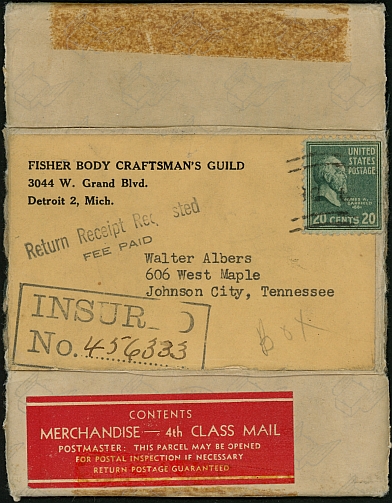
This small box has a fourth class label on it, but it appears too small to have held anything weighing over eight ounces, and no combination of parcel post Zone 4 postage, insurance and return receipt adds to twenty cents. As third class mail it could have been sent at several times. From March 26 to November 1, 1944 the first class postage for eight ounces was six cents, the minimum insurance fee was ten cents and the return receipt fee was four cents, for a total of twenty cents.
From November 1, 1944 to January 1, 1949 the same postage and return receipt fees were effective, but the insurance coverage purchased for ten cents was $5.01 to $25 rather than minimum. From January 1, 1949 to January 1, 1952 a possible rate breakdown is five cents for four to five ounces third class postage, ten cents for insurance from $5.01 to $10, and five cents for the return receipt.
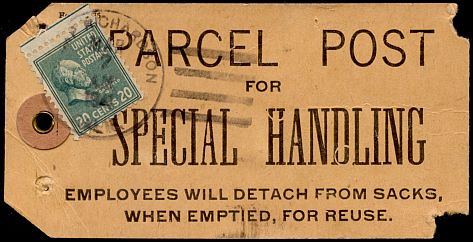
This label was used on a package mailed from Camp Richardson, California in 1941, but there is no address on it. The special handling fee was ten cents for a package up to and including two pounds. The only logical candidates for distance and weight, assuming the postage was not overpaid, are to zones one and two for a package over one but not over two pounds, or to zone four, for a package up to one pound.
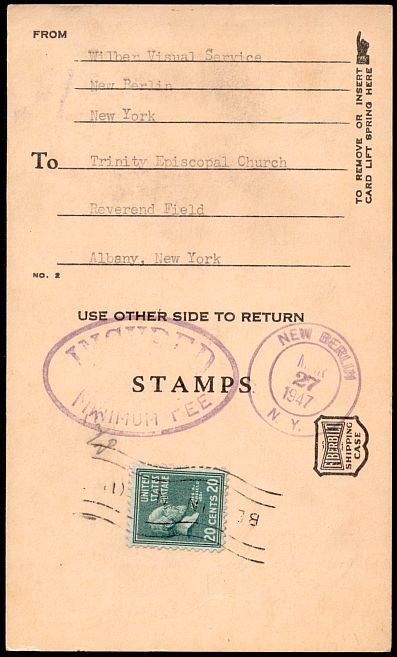
This insured fourth-class label has a notation of 17 plus 3 adding to 20, where presumably the 3 is for the three-cent minimum insurance fee in effect from November 1, 1944 to January 1, 1949. Wilbur Visual Services was likely to have been mailing film rather than books, and there is no indication that either the library or book rate were being used. Film was not covered by either of the special rates until 1953, so regular parcel post rates would have applied.
The shipment was within zone 2, and a one-cent surcharge would have applied, making the weight of the package between seven and eight pounds.
